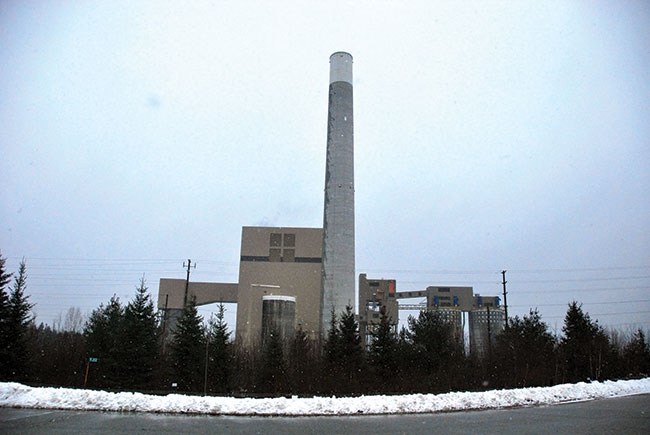
Ontario is blessed with biomass: OPG
February 1, 2017
By Paul Giardetti
Feb. 1, 2017 - Three years ago, Canadian Biomass featured Ontario Power Generation’s (OPG) Atikokan Generating Station on its cover (January 2014). Staff at OPG and particularly those in northwest operations look back with pride on the Atikokan conversion from coal to biomass and the many parallel successes enabled by this conversion.
 Three years ago
Three years agoPeople in northwestern Ontario have seen the downturn of forestry and forest product operations and the resulting impact on host towns that have relied on these industries.
Over the last few years, renewed activities in the forestry sector, brought in part by a new demand for harvest residuals, has created opportunities for aggregation, logistics, pellet conversion, forest management and much needed jobs back to the region. Many of these economic benefits have had a positive impact on local indigenous communities that are keen participants in sustainable natural resource use.
New Ontario pellet suppliers will consume over 1 million cubic metres of crown fibre, which will add more than 400 jobs in the supply chain. With new private investments of over $150 million, the conversion cost of Atikokan has leveraged nearly equal investment in the pellet sector. Putting these projects into perspective, these expenditures are among the largest investments the Ontario forestry sector has experienced in the last quarter century.
Research has advanced on wood combustion guidelines, assisted in part by OPG’s ongoing support of Confederation College’s Bioenergy Learning and Research Centre. This work is helping to standardize and streamline regulatory approvals for future biomass applications. In addition, the next generation of bioenergy technicians are being trained to support the growth of this industry.
Advanced biomass, as used by our Thunder Bay Generating Station and featured by Canadian Biomass (December 2015), is a viable alternative to coal and provides a low capital conversion cost option for coal generators. That is why this technology has caught the attention of worldwide utilities who are evaluating this option in their future generating portfolio.
OPG produces about half the electricity Ontario homes, schools, hospitals and businesses rely on each day. We’re committed to ensuring our energy production is safe, reliable and environmentally sustainable for today and for the future. In 2014, OPG burned our last piece of coal to make electricity. This was the largest single action to combat climate change in North America. Refuelling two of our thermal stations with biomass provides Ontario with renewable, dispatchable power and it optimizes the use of existing publicly owned assets.
With action plans to achieve the Paris COP21 agreement being developed around the world, renewable energy alternatives to fossil fuels are being considered as compliance options. When the value of stranded assets, ease of dispatch and grid balancing requirements are factored in, bioenergy projects can shine even when the sun does not!
As leaders gather to unify carbon reduction approaches, let’s not forget that Canada is blessed with an abundance of biomass. Bioenergy solutions can leverage this resource into greater economic gain while helping to meet global Green House Gas (GHG) commitments.
Paul Giardetti is the Regional plant manager for northwest operations, Ontario Power Generation.
Print this page